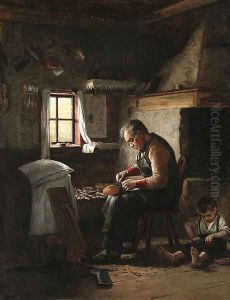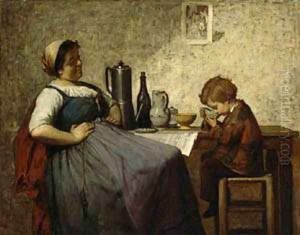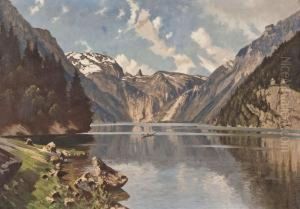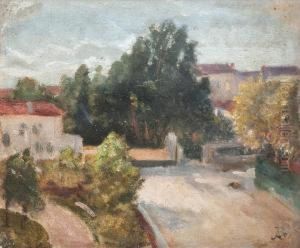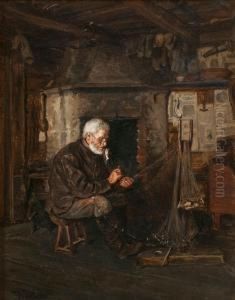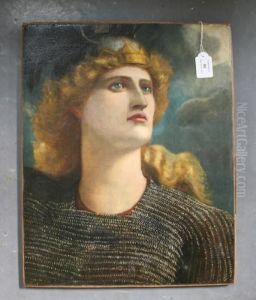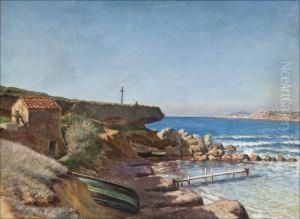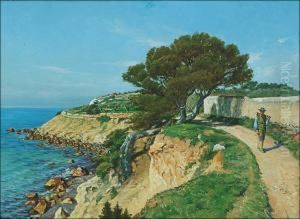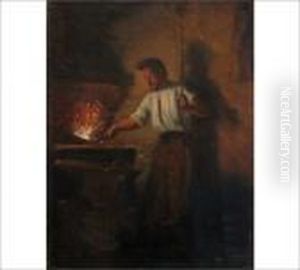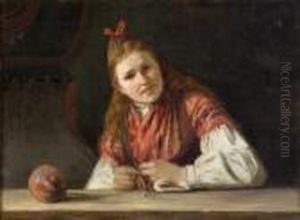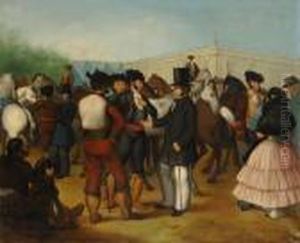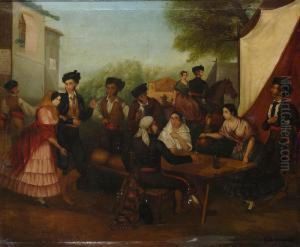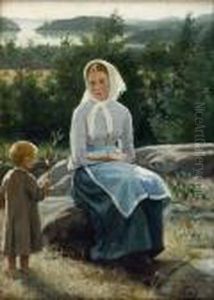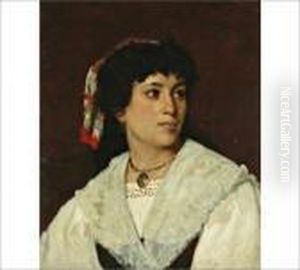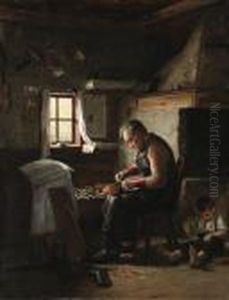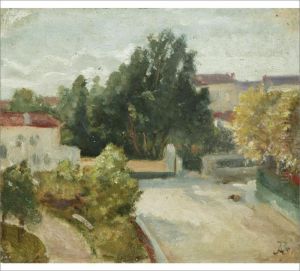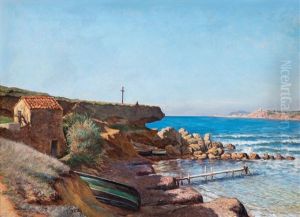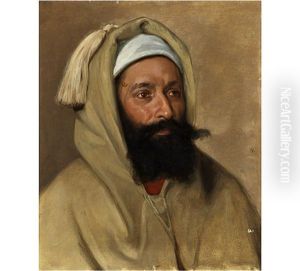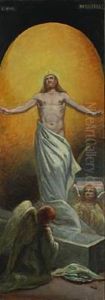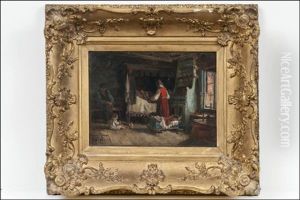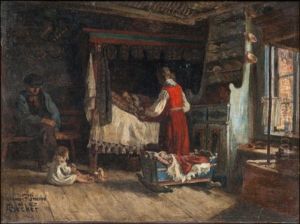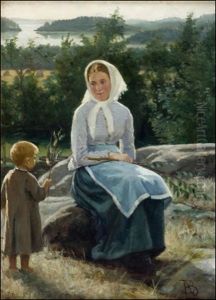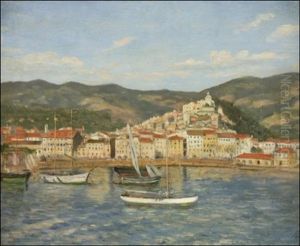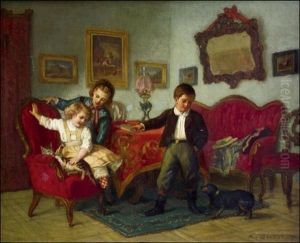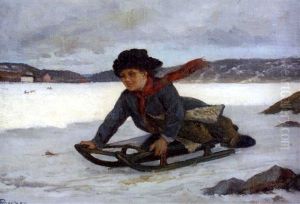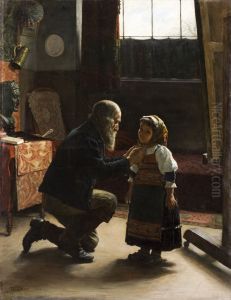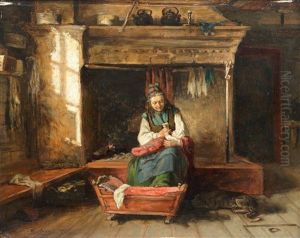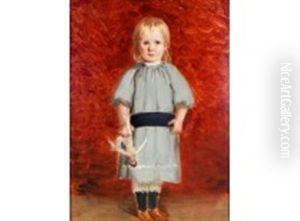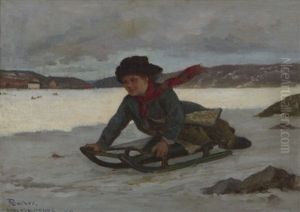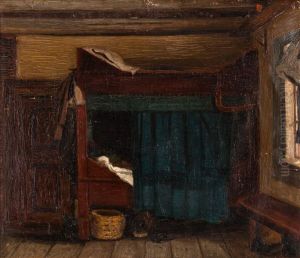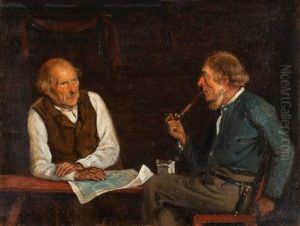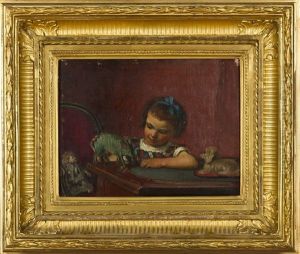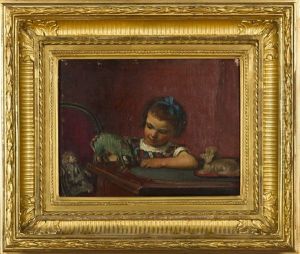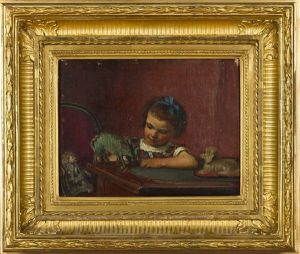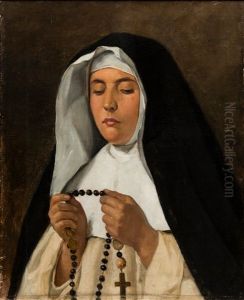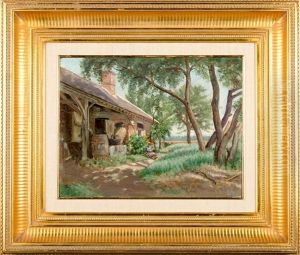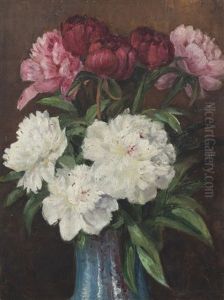Adolf von Becker Paintings
Adolf von Becker was a Finnish genre painter and art teacher, born on August 14, 1831, in Helsinki, then part of the Grand Duchy of Finland under the Russian Empire. He is notably recognized for his contributions to the Finnish art scene during the 19th century, a period marked by a strong desire for cultural and national identity in Finland. Becker's training and artistic journey were significantly influenced by his studies abroad, a common practice among Finnish artists of his time seeking professional growth and inspiration.
Becker's initial art education took place at the Academy of Fine Arts in Helsinki, but his quest for artistic mastery led him to further his studies in Düsseldorf, Paris, and Antwerp - notable centers of art in the 19th century. His time in Paris was particularly impactful, where he was exposed to the works of French realists and the emerging Impressionist movement. This exposure is evident in his work, which often depicted everyday life with a nuanced understanding of light and color.
Throughout his career, Adolf von Becker was highly regarded as an art educator. In 1866, he founded his own private art school in Helsinki, which became a crucial institution for aspiring Finnish artists. His teaching methods and philosophy were heavily influenced by his time in France, emphasizing direct observation and the study of nature as essential components of artistic training.
Becker's oeuvre includes portraits, landscapes, and genre scenes. His ability to capture the subtleties of light and his detailed attention to the depiction of textures and materials won him admiration among his contemporaries and later generations. Despite his success and influence in Finland, Adolf von Becker remained relatively unknown outside his home country, a fate shared by many Nordic artists of the period.
Adolf von Becker's legacy is preserved in the collections of major Finnish museums, where his works continue to be celebrated for their contribution to the development of Finnish art. He passed away on August 23, 1909, leaving behind a significant body of work that reflects the cultural and artistic aspirations of 19th-century Finland.
